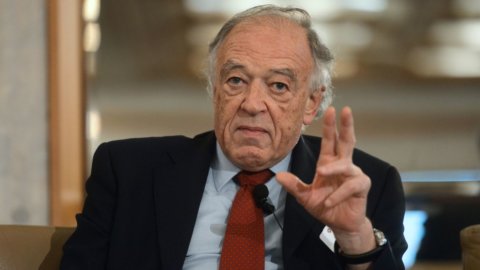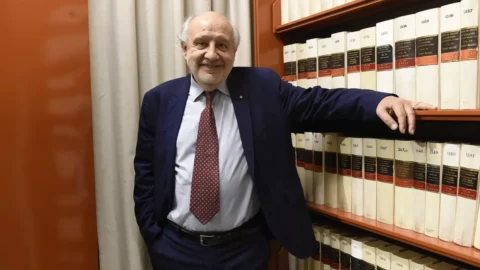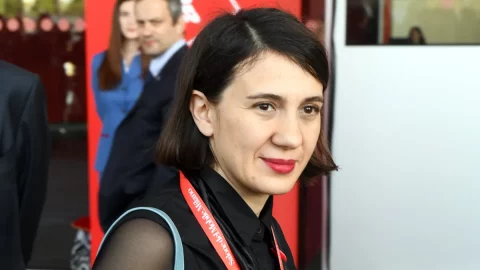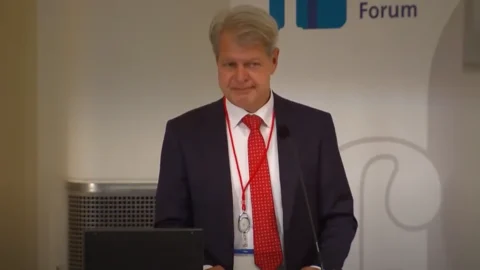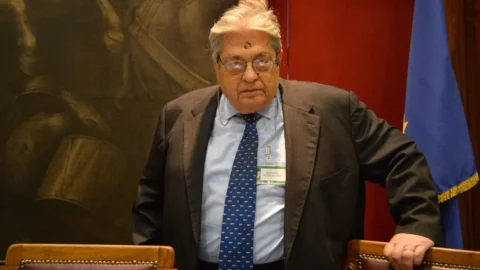“For the definitive liberalization of electricity and gas, decisions are needed in the near future. It is necessary, by September at the latest, to have clear rules on how the transition from the protected market to the free market will take place for around 20 million families. Otherwise the companies will find themselves with water at their throats in view of the deadline of 1 January 2018 and the usual Italian game of postponement will start. It must absolutely be avoided." To sound the alarm is Joseph Gatti, manager with a long cursus honorum in the world of energy and today president of Energia Competente, the association that competes with Assoelettrica, e board member of Engie Italia, the new brand under which Gdf Suez operates. The FIRST interviewonline it takes place on the eve of the expected resumption of the parliamentary process of the Competition law bill in the Senate, which was once again blocked after the resignation of the former Minister for Development Federica Guidi and which should start again now that Carlo Calenda has taken over the department.
Within a year and a half, according to the European rules that Italy must implement, the vast majority of Italian families will have to switch to the free market also for electricity and gaas, as happened for telephones. We're at a good point?
“On the contrary, we are already late and to understand this we need to take a step back. The latest official data tell us that at the end of 2014 there were just under 25 million household electricity consumers. More precisely, there are 30 million meters of which 21 on the protected market, where the Energy Authority determines the price of energy and 9 million on the free market. The passage from the standard offer to the free market is taking place at the rate of around 1 million consumers a year: at this rate it would take twenty years to complete the process. And instead the deadline is now around the corner but the massive migration of 21 million customers is no small matter: we need to pay close attention to the mechanisms with which this crucial step will be implemented”.
What does it take, in your opinion, to manage this umpteenth revolution in energy?
"There are three fundamental requirements for such a complex operation: we need to simplify bills, we need to make offers more comparable with each other and a massive information campaign cannot be missing".
Commercial offers, for example in telephony, often seem to be made on purpose not to be comparable to each other. In the case of energy, then, there is no clear economic convenience to take the plunge and there is also the fear that liberalization brings with it the risk of an increase in prices. Has all this contributed to slowing down full liberalisation?
“We have to distinguish. I understand the need for operators to differentiate between offers, but the need to compare them is a fact we cannot ignore. It is another thing to say that the protected market is more convenient than the free one: it seems to me rather an urban legend. The reason lies in the fact that different things are compared: on the protected one we have only one price, indexed to that of the Power Exchange; on the free one, however, we have two prices: the indexed one and the fixed one.
It is clear that the latter is not convenient in a phase of falling prices while it becomes so when prices rise. The indexed price, on the other hand, allows savings of up to 100 euros a year for contracts that combine electricity and gas, as demonstrated by an independent observer such as SoS Tariffe on a regular basis. But this advantage on the price of energy is reduced if we look at the electricity bill as a whole because out of an average annual expenditure of 600 euros per family, around 55% goes into system charges to repay distribution, transmission and incentives to renewables. Out of the remaining 300 euros, even if the convenience compared to the protected one were 10 or 15 percent, it would represent 30-40 euros in value per year. And even if the service improves in quality, that's not enough of a push to convince older consumers to switch. Young people, on the other hand, move more. However, there is another pitfall to be faced and resolved”.
Which?
“The protected electricity market, unlike gas where anyone can offer the protected price, has remained substantially monopolized by Enel with an 80% share and by the municipal companies for the remaining 20%. If the migration to the free took place with these same proportions, a monopoly would be perpetuated. For this we need tools capable of breaking this pattern”.
For example?
“One can think of a stimulus effect as was done in France: those who do not switch to the free market on 1 January 2018 can remain on the safeguarded market for a further period, knowing however that the longer they wait, the more expensive they will pay for energy. Basically a disincentive to stay”.
The chairman of the Senate's Industry Committee has proposed an auction mechanism whereby customer packages are offered to the operator offering the most convenient price. Has the issue progressed?
“This is a last resort to speed up the migration but we need to know the size of the customer lots, what characteristics the auctions will have. This information is indispensable for each operator to be able to prepare the offer and organize themselves in terms of billing capacity, customer assistance centres. It takes at least a year of preparatory work. This is why we need to speed up the pace in Parliament. Furthermore, we are already late on two other preliminary fulfilments: the integrated information system is not yet fully functional; and there is strong resistance to brand unbundling, the substantial ban on using the same or similar brands – as happens instead – to distribute and sell energy”.
Times are actually tight and after the Senate the Competition Bill will have to return to the Chamber again. Are we right on edge?
"Consider that the Competition Law dates back to 2014, in implementation of a 2009 law never implemented before: if Matteo Renzi wanted an argument against perfect bicameralism, he found it here".
The other open question is the capacity payment or the remuneration of the installed capacity for thermoelectric plants in the face of the advance of renewables. Isn't there a risk of keeping plants off the market alive?
"Attention. We are not talking about obsolete plants but the new efficient gas combined cycle plants built after the year 30. This is 9 MegaWatts, of which 10-30 in excess due to the advance of renewables. We are talking about 7200 billion which will not repay the investments since if the optimal operating time of a plant is calculated at 2.000 hours/year, today many of these plants do not reach 8760 hours. Against this, we must consider that a year is made up of 1500 hours while a solar plant in Sicily is active for 2.000 hours and the wind in Italy reaches just under 6.500 hours. There are about XNUMX hours left in which we have neither sun nor wind but we have to turn on the light anyway. This is why thermoelectric capacity is needed, to stabilize the system”.
And will Brussels welcome this mechanism? There is now talk of batteries to stabilize the system…
“Let me be clear, I am against creating forms of generalized subsidies to keep plants that are not on the market alive. And I am well aware that Brussels actively monitors that there is no state aid or improper aid to companies. But electric back up for renewables is a real technical need at least until battery technology is stabilized. In the meantime, a mechanism must be defined which rewards the flexibility of the plants and which identifies an adequate number of MegaWatts to be put out to tender, reducing the available fleet. A part will have to go in mothballs”.
Last question: Assoelettrica is negotiating with Assorinnovabili and we are moving towards a single association in perspective. Will competing energy stand by and watch?
“I'll answer you this: our partners – Axpo, Engie, Tirreno Power and Repower with approximately 8.000 MegaWatt of electricity generation capacity – are already integrated, all of them also operate in renewables. I have tried to reopen the dialogue with Assoeletrica, without finding substantial availability so far. However, we are ready to consider all possible job opportunities together”

